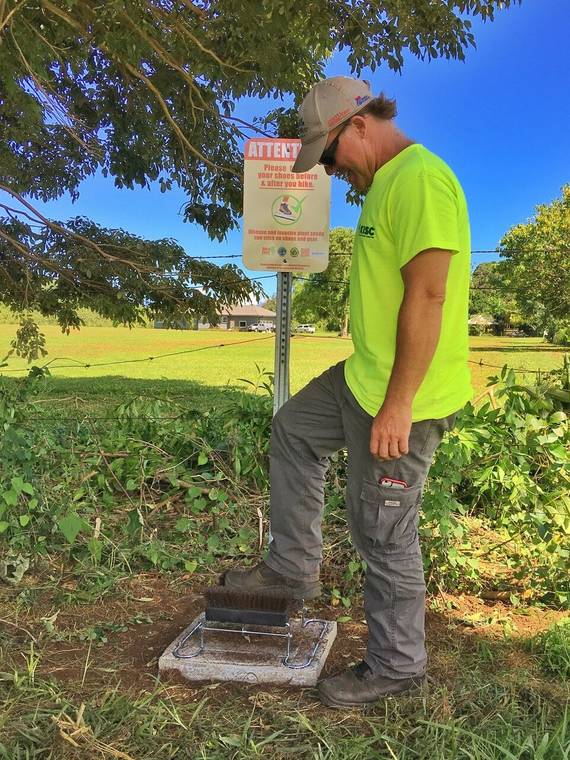LIHUE — Ohia trees in two more locations on Kauai have tested positive for the fungus that causes rapid ohia death, and the state is asking everyone to practice bio-sanitation in order to help stop the spread.
Thursday, the state Department of Land and Natural Resources Division of Forestry and Wildlife announced six more trees in the Lihue-Koloa Forest Reserve have tested positive for Ceratocystis lukuohia, the more virulent of the two fungal pathogens causing rapid ohia death, the disease killing ohia across the state.
“The lukuohia species is much more aggressive than the huliohia species,” said Sheri S. Mann, DOFAW Kauai branch manager. “It is very important to do all we can not to accidentally spread the pathogen around on our vehicles, boots and clothes.”
The testing was prompted by recent helicopter surveys conducted within the Lihue-Koloa Forest Reserve. A total of 10 dead ohia trees were sampled.
The six that tested positive are located in the Lihue-Koloa Forest Reserve — five near the Kalaheo-Lawai section and one in the Wailua section. The dead ohia in upper Wailua is along the Powerline Trail. Both places are fairly accessible, so experts are asking for people’s help in containing the disease.
“These deadly, microscopic, fungal pathogens can be moved around the island in mud,” said Tiffani Keanini, project manager of the Kauai Invasive Species Committee. “Theoretically, all it takes is one spore to infect an ohia tree. So, we’re stressing bio-sanitation practices. Basically, leave mud where you found it. That may be easier said than done, but every little bit helps.”
Statewide, multiple organizations and government entities are teaming up to save ohia.
DOFAW and KISC have scheduled an on-the-ground sampling effort the second week of September. A crew of 12 to 15 trained technicians will sample additional suspect trees.
Six experts from the Big Island Invasive Species Committee and one from Hawaii Island DOFAW will join the group. Local residents can expect to see helicopters flying in and out of the affected areas during the survey week.
“The more we know about where this pathogen is and how it is moving, the more we can do to slow it down or maybe even stop it,” Mann said.
The disease was identified on Hawaii Island in 2014 and identified on Kauai late in 2018. Ohia is a native tree, vital to the ecosystem and watersheds in Hawaii.
The public can help by making sure to clean gear and vehicles after hiking or driving through areas that contain ohia. Boot-washing stations are also available at trailheads.




